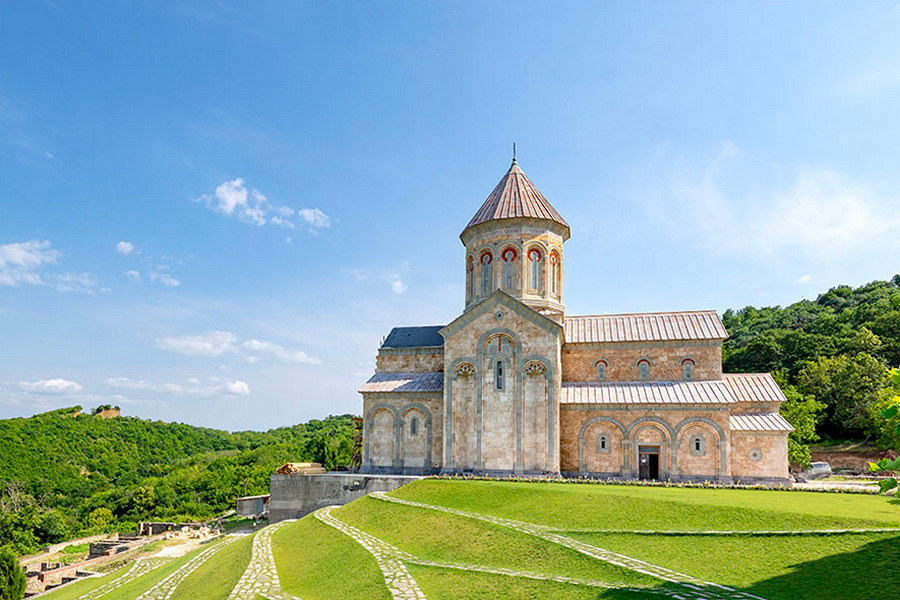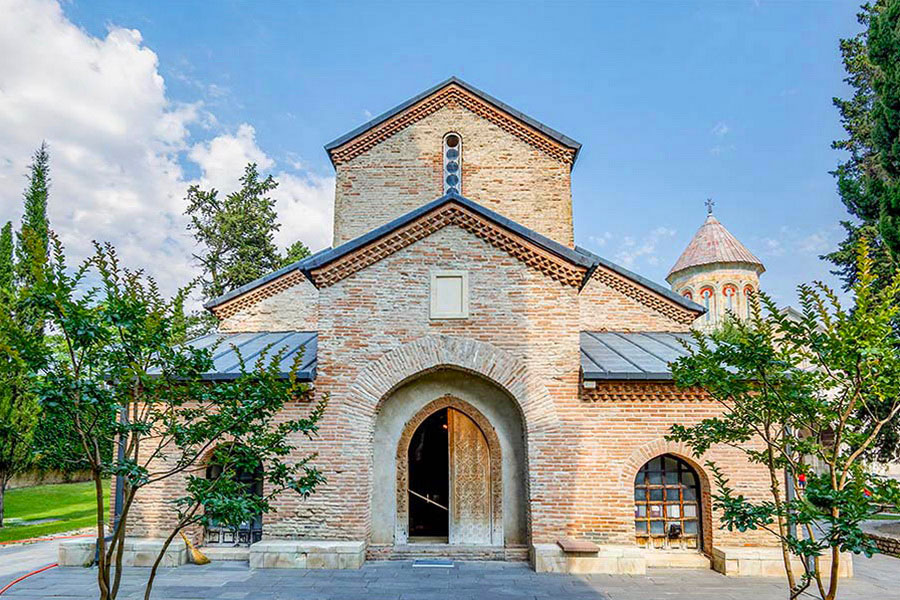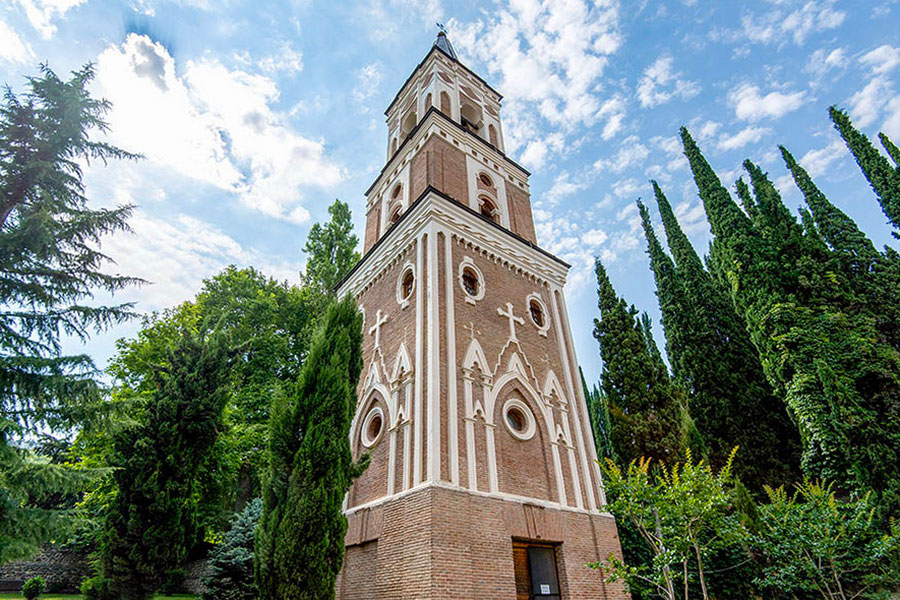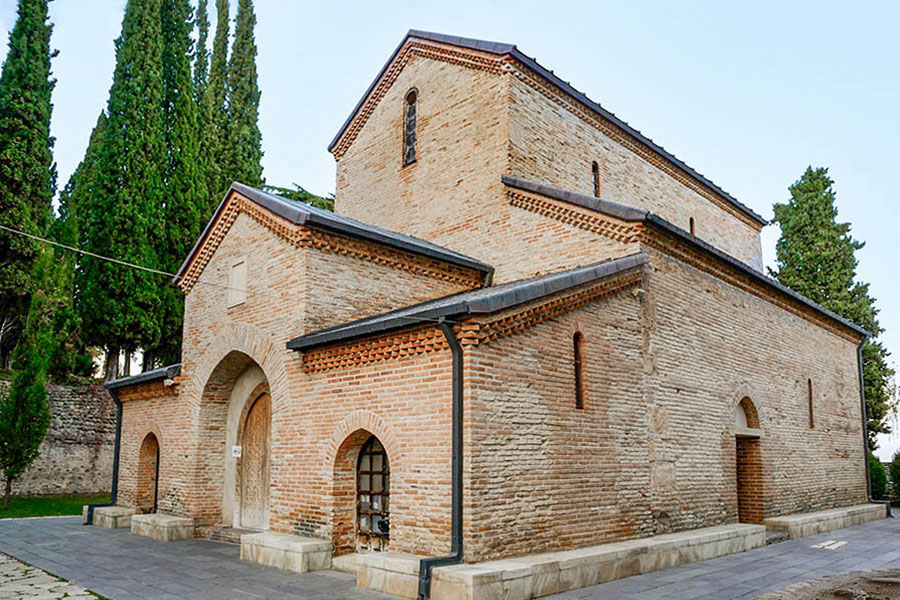Bodbe Monastery is one of Georgia's most significant historical and religious landmarks, nestled on the slope of a wooded hill just 2 km from the town of Sighnaghi. Officially named the Monastery of Saint Nino in Bodbe, this sacred site is where Saint Nino - the Christian enlightener of Georgia - spent her final years and was laid to rest. Today, it is a key attraction in the Kakheti region, comprising the Cathedral of Saint George, the Cathedral of Saint Nino, a bell tower, a spring, and several monastic buildings.
Nino was born in Cappadocia and raised in Jerusalem. At the age of 14, she fled with 36 other girls to Armenia to escape the Roman emperor Diocletian, who had launched the Great Persecution of Christians. In Armenia, they were captured by Tiridates III, who also persecuted Christians. Almost all the girls were executed; only Nino and Mane managed to escape. Mane withdrew to a hermit's life in the Caucasus Mountains, while Nino continued to Georgia, where she began preaching and ultimately converted King Mirian and Queen Nana to Christianity. According to legend, four stars appeared to King Mirian and scattered across the mountains. He ordered crosses to be erected on each of the peaks. One of the stars pointed to Bodbe, prompting Nino to travel there for the raising of the cross. She chose to remain in Bodbe for the rest of her life.

After Nino’s death, her body was to be transported to Mtskheta for burial. However, according to legend, not even a hundred men or oxen harnessed to a cart could move the coffin. As a result, she was buried on the very spot where her tent had stood. A church was soon built on the site, though it has not survived. Over time, a monastery took shape around it, becoming one of the key religious centers in Kakheti. In the 9th century, the Church of St. George was erected in the basilica style. Later, for reasons that remain unknown, Bodbe Monastery lost its prominence and became a quiet retreat for monks until the 15th century. When the Kingdom of Kakheti was established, the monastery regained its high standing. The king granted significant power to the Bodbe diocese, and before long, the coronations of Kakheti’s kings began to take place here.
In 1837, with the arrival of the Russian Empire in Georgia, Bodbe Monastery lost its independent status. Its lands were confiscated, the Bodbe diocese was dissolved, and only a small group of monks remained within the monastery. In 1888, however, Emperor Alexander III of Russia visited the site, was impressed by its natural beauty and fertile surroundings, and ordered its restoration. During this period, a three-story bell tower was constructed opposite the Church of St. George.

In 1924, following the establishment of Soviet rule, Bodbe Monastery was closed. Its cathedral was converted into an operating room, and the surrounding buildings were repurposed as a hospital. It was not until 1991, after Georgia's independence from the USSR, that monks returned to the monastery and began its revival. For over a decade, Bodbe remained a place of quiet devotion. At the start of the 21st century, restoration efforts resumed in earnest, including the construction of the Cathedral of Saint Nino. During this time, the monastery also began to attract growing interest as a tourist destination, and today it welcomes more visitors than pilgrims.
The Cathedral of Saint George at Bodbe Monastery is a three-nave basilica, with the tomb of Saint Nino located in its southern apse. This church serves as the spiritual center of the complex. Over the course of a thousand years, it has undergone numerous reconstructions, and its original appearance is unknown. The interior walls and ceiling are adorned with frescoes painted in a style that reflects Russian, rather than Georgian, artistic traditions. Visitors should note that photography and video recording are not permitted inside the cathedral.

Next to the thousand-year-old cathedral are residential and auxiliary buildings where monks engage in traditional crafts such as icon painting and gold embroidery. On the opposite side stands a spacious observation deck offering panoramic views of the Alazani Valley and the recently constructed Cathedral of Saint Nino. Adjacent to the deck is a staircase leading to a path that descends to the Holy Nino Spring. This footpath is 600 meters long, though the spring can also be reached by car via a 3-kilometer road. The spring is revered for its healing properties - visitors often collect the cold, clear water, and some choose to immerse themselves in it.
The Cathedral of Saint Nino, sometimes mistakenly identified as the main church of the monastery, was built between 2011 and 2019. Its triconch architectural layout mirrors that of the historic Bagrati Cathedral in Kutaisi. With its three-toned façade, austere design, and significant construction budget, the cathedral is considered a notable example of contemporary religious architecture in Georgia.
Today, Bodbe Monastery is a popular destination for travelers en route to Sighnaghi. The grounds are well maintained, and the sweeping views of the Alazani Valley invite visitors to explore the broader Kakheti region. Yet there are two days each year when the monastery takes on a more solemn character: January 27, the day of Saint Nino’s death, and June 1, commemorating her arrival in Georgia. On these days, pilgrims gather at her tomb, descend to the spring to drink its sacred water, and reflect in the tranquil silence of this revered place.


